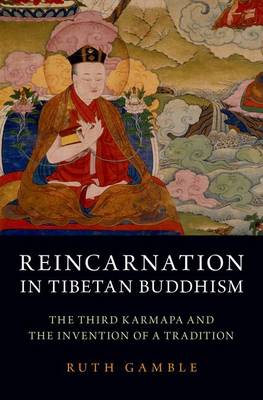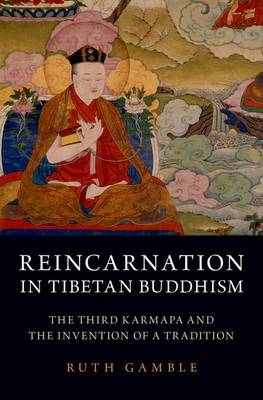
Je cadeautjes zeker op tijd in huis hebben voor de feestdagen? Kom langs in onze winkels en vind het perfecte geschenk!
- Afhalen na 1 uur in een winkel met voorraad
- Gratis thuislevering in België vanaf € 30
- Ruim aanbod met 7 miljoen producten
Je cadeautjes zeker op tijd in huis hebben voor de feestdagen? Kom langs in onze winkels en vind het perfecte geschenk!
- Afhalen na 1 uur in een winkel met voorraad
- Gratis thuislevering in België vanaf € 30
- Ruim aanbod met 7 miljoen producten
Zoeken
Reincarnation in Tibetan Buddhism
The Third Karmapa and the Invention of a Tradition
Ruth Gamble
Hardcover | Engels
€ 257,95
+ 515 punten
Omschrijving
Reincarnation in Tibetan Buddhism examines how the third Karmapa hierarch, Rangjung Dorj� (1284-1339) transformed reincarnation from a belief into a lasting Tibetan institution. Born the son of an itinerant, low-caste potter, Rangjung Dorj� went on to become a foundational figure in Tibetan Buddhism and a teacher of the last Mongolian emperor. He became renowned for his contributions to Buddhist philosophy, literature, astrology, medicine, architecture, sacred geography and manuscript production. But, as Ruth Gamble demonstrates, his most important legacy was the transformation of the Karmapa reincarnation lineage to ensure that, after his death, subsequent Karmapas were able to assume power in the religious institutions he had led. The inheritance model of reincarnation instituted by Rangjung Dorj� changed the Tibetan Plateau's power relations, which until that time had been based on family associations, and created a precedent for later reincarnate institutions, including that of the Dalai Lamas.
Drawing on Rangjung Dorj�'s hitherto un-translated autobiographies and autobiographical songs, this book shows that his reinvention of reincarnation was a self-conscious and multi-faceted project, made possible by Rangjung Dorj�'s cultural, social, and political standing and specific historical and geographical circumstances. Exploring this combination of agency and historical coincidence, this is the first full-length study of the development of the reincarnation institution.
Drawing on Rangjung Dorj�'s hitherto un-translated autobiographies and autobiographical songs, this book shows that his reinvention of reincarnation was a self-conscious and multi-faceted project, made possible by Rangjung Dorj�'s cultural, social, and political standing and specific historical and geographical circumstances. Exploring this combination of agency and historical coincidence, this is the first full-length study of the development of the reincarnation institution.
Specificaties
Betrokkenen
- Auteur(s):
- Uitgeverij:
Inhoud
- Aantal bladzijden:
- 340
- Taal:
- Engels
Eigenschappen
- Productcode (EAN):
- 9780190690779
- Verschijningsdatum:
- 6/08/2018
- Uitvoering:
- Hardcover
- Formaat:
- Genaaid
- Afmetingen:
- 157 mm x 239 mm
- Gewicht:
- 598 g

Alleen bij Standaard Boekhandel
+ 515 punten op je klantenkaart van Standaard Boekhandel
Beoordelingen
We publiceren alleen reviews die voldoen aan de voorwaarden voor reviews. Bekijk onze voorwaarden voor reviews.









